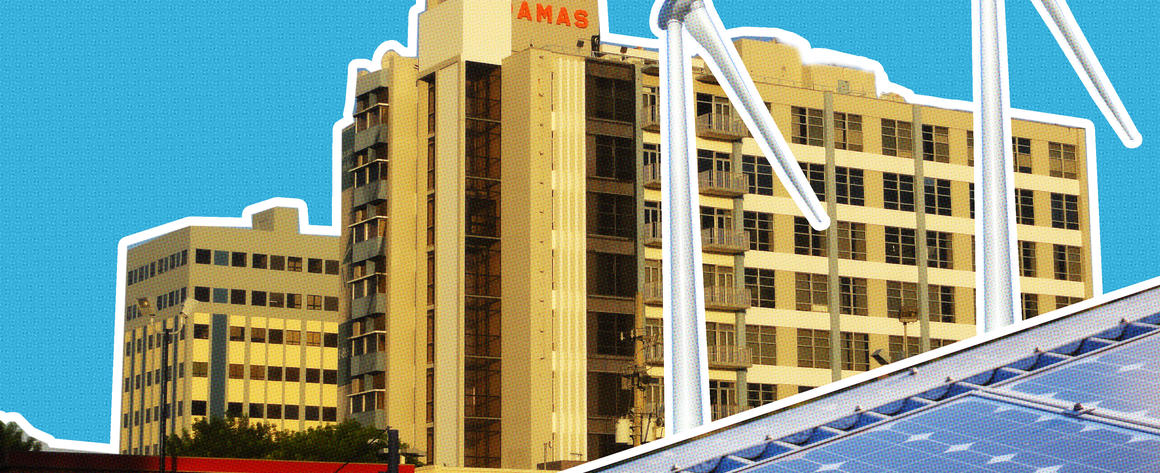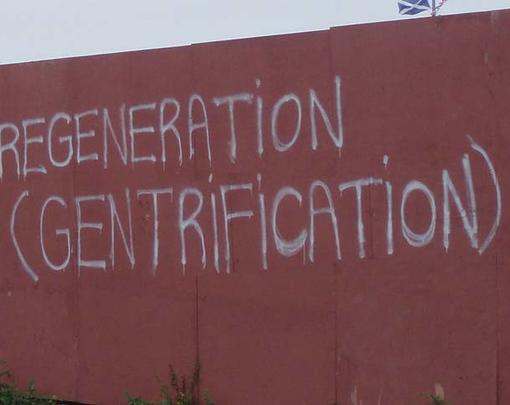Puerto Rico is still in a state of medical emergency two months after Hurricane Maria. The massive loss of power on the island has affected everything from sewage disposal to transportation, communication, air quality, medication storage, and the functioning of life support devices—all with significant consequences for the health of islanders. Since the storm and subsequent instability, Puerto Ricans have suffered from serious mental health issues.
Hurricane Maria is just the latest in a wave of natural disasters that remind us climate change is unequivocally a serious threat to public health. It’s not just the likelihood of increasing occurrences of catastrophic events like hurricanes and floods that will affect our health, but also threats to public health from warmer overall temperatures, increased spread of infectious and water-borne diseases, food insecurity, and decreased air quality. This is why the influential 2015 Lancet Commission concluded that if not properly addressed, climate change would undermine fifty years of public health gains.
In July 2017, the World Health Organization further illustrated the point with these striking statistics: between 2030 and 2050, climate change is expected to cause approximately a quarter million additional deaths per year.
The problem is not new, however. Fossil fuels, the root cause of climate change, have always been a serious public health threat. Just ask communities that live in proximity to a power plant or pipeline. Fossil fuel infrastructure (and their toxic byproducts) are notoriously often sited in communities with the least financial and political power. The Dakota Access Pipeline is a prime example. The dirty oil pipeline cuts through the Standing Rock Sioux tribe’s land and endangers the Missouri River, their primary water source.
Climate change is also expected to continue to compound already existing health inequalities by intensifying some of the underlying conditions which cause them, like the disproportionate exposure poorer people have to toxins and extreme weather events. Health systems should be acutely aware of this problem—and of how much it is already costing. Health inequities are estimated to generate an additional annual cost of $300 billion in medical care, lost wages and productivity, family leave, and premature death. Those figures will only keep rising as climate change continues to burden disinvested communities, contributing to ever greater health disparities.
Do No Harm
As massive energy users, health systems are exacerbating climate change. In fact, if the US healthcare system was a country, it would rank 13th in greenhouse emissions globally. Hospitals alone are the second-most energy intensive commercial buildings in the country. U.S. healthcare’s emissions alone are responsible for 12 percent of the country’s acid rain and 9 percent of its respiratory disease.
Though there is little publicly available information on the investment portfolios of health systems, we can assume they are similar to those of other large institutional investors like universities, which means they include a host of fossil fuel companies. This means that healthcare systems, through their investments, are contributing to the degradation of their own community’s health, and intensifying healthcare’s impact on the climate beyond its own energy use.
If the first rule of medicine is “do no harm,” the healthcare sector must urgently reconsider its relationship with fossil fuels. The benefits to community health would be enormous. For instance, by cutting just their electricity emissions 30 percent by 2030, the US healthcare sector could prevent “4,130 premature deaths, 85,000 asthma attacks, 4 million respiratory symptom events, and 3,750 hospital visit incidents, and save about $1.2 billion in medical costs.” The dual incentives to improve community health and prevent unnecessary costs should have health systems among the institutions most motivated to take an active role in the energy transition. Here Healthcare Without Harm has been leading the charge by organizing healthcare systems and health professionals to create an ecologically sustainable healthcare sector that advocates for environmental justice. The successes are mounting, but much work remains to be done.
The needs of people and planet demand a rapid and aggressive decarbonization of the healthcare sector. As healthcare begins to more fully comprehend the human cost of climate change, many hospitals are making strides to procure more energy from renewable sources, decarbonize their supply chains, and in some cases even keep the dollars spent on renewable energy local. The Cleveland Clinic is a great example. When installing their first solar panels in 2010, they chose to work with Ohio Cooperative Solar (now Evergreen Energy Solutions), helping that new enterprise get off the ground and create good local jobs in a historically disinvested community.
This is admirable work, but health systems need to expand how they think about their impact. Not only can they emancipate themselves from fossil fuels, they can leverage their position as anchor institutions to provide opportunities to the wider community by investing in energy democracy strategies like community solar. Community solar can take many forms, and enables a health system to collectively own solar alongside the community they work in. Such a strategy would not only cut carbon emissions for the health system and community members, it could also lower energy bills long-term—particularly for low income residents— and collectively help a community build wealth. The project can also stimulate local employment by partnering with local installers. As a strategy that stands to impact both the environmental and economic determinants of health, it could be the ultimate upstream investment in a community’s health.
For non-profit hospitals, which account for the vast majority of hospitals in America, these investments would be a powerful indicator of the community benefit they provide and should be considered as cross-cutting strategies to address multiple needs identified in their Community Health Needs Assessments.
The opportunity for healthcare to be a champion in the energy transition
Many advocates of an energy transition assume the best path forward is through the choices individual consumers make to get their energy from clean sources. But this assumption ignores two key realities: 1) institutions have massive energy footprints that are much larger than average, individual residential consumers; and 2) many consumers cannot afford clean power alternatives.
Low income communities already have to make agonizing decisions each day—do they pay their electric bill or buy groceries, pay medical bills or buy winter coats for the family? The older, less efficient homes that many live in mean that they often have to dedicate a much larger portion of their income to electric bills than their middle and upper class counterparts. With less disposable income, the high upfront costs of installing rooftop solar, for instance, is prohibitive—even with the falling cost of renewable infrastructure. And since many low-income residents rent their homes, they are practically ineligible anyway. Furthermore, as homeownership rates are much lower among African Americans than whites, access to solar power is highly inequitable. While low-income and disinvested communities could benefit the most from long-term low electricity from clean power sources, they often are denied that opportunity.
By providing alternative, inclusive, and collective options for renewable ownership, health systems can help lower a community’s energy rates without the burden of high upfront costs, provide more local control over energy, and even create local employment—a natural fit for the stewards of community health and wellbeing.
Championing community solar as a community anchor
Health systems should consider acting as anchor institutions in community renewable energy projects like community solar—a largely untapped strategy to date. Their significant purchasing power and organizational capacity can aid in mitigating the financial barriers low-income residents face regarding energy alternatives. Plus, their large footprints and significant land ownership provide physical space to actually site part or all of these projects. A great example is St. Peter’s University Hospital in New Brunswick, NJ which hosts one of the largest systems of solar panels in the state on buildings, parking lots and parking garages across its locations.
There are many community solar ownership configurations, and communities must determine the right path by taking into consideration variables such as: net metering and community solar policies in their area, payback periods for the installation, eligibility for investment tax credits, land ownership and viable roof space, and allies on the ground.
For community solar, having a health system on board will be hugely helpful in commissioning the project. For many installers, working with a reputable and sizable institution like a hospital lowers their perception of risk. Since health systems need the most power, they will buy a significant bulk of the community solar project, helping to mitigate the risk of identifying additional, smaller subscriptions of community members.
As a long-term institution in the community, the health system can also act as a major convener. Their engagement in the process could help to legitimize the opportunity for low- and moderate- income communities, as well as serve as an outreach hub. They can also work alongside the community to identify the right installer for the project and prioritize one that is local and inclusive, growing the renewable jobs’ market locally.
A healthcare system could even work to develop financing tools and loan programs to defray costs over time for their patients and employees that might enroll in the program. For example, by taking on the high upfront costs of the project development, they could work alongside the developer to create a pay-as-you-go option, which requires no upfront purchase but could still allow for community ownership.
Healthcare systems taking a leading role in community renewable energy is a failsafe pathway towards a healthier, more sustainable community. If financed with an eye for inclusion, it could lower energy bills for those who need it most, freeing up funds for families to spend on other critical needs. Hospital-supported community solar projects would help lower emissions both from the hospital and the community, mitigating climate change. In the event of a disaster or power outage, a community solar installation could even act as emergency power.
Furthermore, health systems have the capital to make these investments, perhaps more than most actors. Nationally, health systems have over $400 billion in investment assets. Taking into account the direct harm that fossil fuels cause to human health, a natural strategy would be for health systems to divest assets from the fossil fuel industry and reinvest them in projects like community solar. However, what these health systems choose to invest their capital in is as important to the future health of their communities as the decision to divest it from fossil fuels.
Health systems like Gundersen are already setting the tone. In 2014, they announced they were freezing all new investments in fossil fuels and investing 5 percent of their long-term portfolio in the development of renewable energy, including four windmills and multiple solar projects. We may soon find that a wave of other health systems in America will follow suit, as happened in the 1990s with tobacco divestment.
With government action to regulate fossil fuels and support the transition to renewables far too slow and ineffectual to meet the needs of people and planet in the necessary time-frame, healthcare should not shy away from taking the lead. For what could be more damaging to human health than climate catastrophe and what could be more beneficial than community-building, job-creating, climate-mitigating initiatives?





